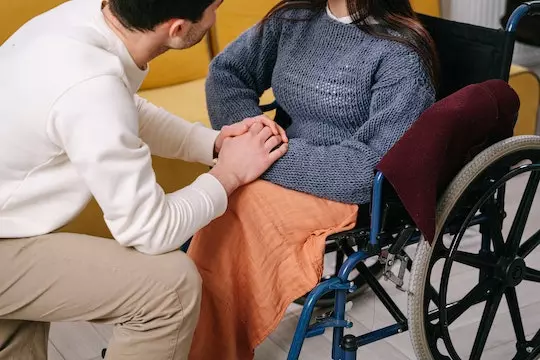How Long Do You Need a Caregiver After Hip Surgery?
For a few days to a few weeks, you will require assistance. According to the AAOS, the majority of persons may resume most light daily activities on their own in 3 to 6 weeks.
During the first few days after hip surgery, you should limit your activity and ask a family member or friend to help you with housework. When you can, store items on counters or waist-high shelves. Your physician will advise you on how long you should wait before returning home. You’ll have a checkup six to eight weeks after a hip surgery. After that, your caregiver will stay with you until you recover fully and have no complications.
Recovery from hip replacement surgery
A senior typically requires a lengthy recovery period, ranging from three to six months after hip replacement surgery. During this time, the patient will likely need assistance with daily activities. These activities will help the patient to increase their independence and reduce the risk of complications. A caregiver can encourage the older person to perform daily activities so that they can resume most normal activities promptly.

After hip replacement surgery, physical therapy will be needed before and after the procedure to help the patient regain strength and mobility. Physiotherapy will begin soon after surgery and will be essential for the patient. Physical therapists will teach patients specific exercises that will help improve blood flow, build muscle strength, and get them ready to begin moving safely. A caregiver’s support will ensure the patient’s recovery is as smooth as possible, so they should be available if needed.
A person with hip replacement surgery should be able to walk comfortably, which will help with healing. The physical therapist will prescribe a home exercise regimen that includes walking. This home exercise program also includes specific daily exercises. The exercises will help the patient regain mobility and strength. Eating a balanced diet will also help with recovery, as proper nutrition will promote muscle strength and healing. A caregiver should be able to facilitate healthy eating and help the patient prepare meals.
Activities to facilitate recovery.
Physical therapy and other post-operative exercises can help you recover from hip surgery. Physical therapy strengthens the muscles that support the hip joint. Your doctor may prescribe an assistive device for you to use after surgery. You will have to learn to use this device properly. Your doctor will also inform you about specific precautions and activities to help you recover more quickly. Some people choose to start physical therapy on the day of surgery. Some people also choose to have an outpatient hip replacement. Regardless of your chosen procedure, your surgeon will discuss these steps.

After hip replacement surgery, you should gradually increase your physical activity. Walking, jogging, and other daily activities will help you feel better and improve your recovery. If you have had the surgery recently, you should avoid lifting or bend at the waist, as these activities may cause blood clots and increase the risk of dislocation. In addition, elevating your leg may increase your risk of dislocating the new hip. However, you can try to increase your walking and household tasks gradually.
Walking helps you increase your strength and endurance. For the first few weeks, you should try climbing stairs with a crutch on the side of the operated leg. Using a walker or crutch will allow you to move your foot one step at a time. Repeat this exercise a few times per hour. Walking with crutches can also improve your recovery. It will also reduce swelling. However, following your doctor’s instructions is essential to avoid further complications.
Preparing the house for family caregivers
Several steps must be taken to prepare the house for family caregivers after a hip surgery. First, ensuring the home is clean and comfortable before the loved one arrives is vital. If possible, cook ahead of time, so you don’t have to worry about preparing meals for them while they are recovering. Prepare food in advance and store it in the freezer. Finally, if possible, make sure the house is handicapped and accessible.
Once you’ve scheduled the surgery, the next step is to prepare the house for the family caregivers. Prepare the house by removing clutter, ensuring the floors are dry, and removing loose furniture or throw rugs. Also, arrange the furniture, so it’s easy to walk around and remove obstacles. As the person recovers, they may need help dressing and bathing themselves. Also, set up a bed on the first floor, so they don’t trip over anything.
The next step is arranging the house so family caregivers can easily access the loved one. Move the bed and clothing to a lower level. It’s also a good idea to move small pets out of the house to make it easier for the caregivers to reach them. The caregivers will need help moving around the house and using the restroom. The best way to prepare the house is to gather all necessary items before the surgery. Arrange the beds, so they’re easy to reach, and arrange everything for easy access.
Pain management
After hip replacement surgery, you may need help for several weeks. However, most people require some help for around a week. To ensure that you get the best possible recovery from the surgery, it is a good idea to make sure that someone is available to help you with daily tasks and take you to appointments. After surgery, you will also need help with everyday household tasks, such as preparing meals and doing the laundry.
Your caregiver should be aware of your loved one’s pain medication and ensure that they take it. It’s also a good idea to provide them with extra bandages so they can change them frequently. You’ll also need someone to drive them home after surgery. A family member can also stay overnight if needed. While the initial recovery period will be relatively short, you will need someone to assist you with everyday tasks for the first few weeks.
Rehabilitation is crucial after a hip surgery. You’ll need to be active, able to move your hip and leg, and avoid sitting in one position for more than 30 minutes. In addition, you’ll need to use crutches or a walker until the doctor says it’s okay to use them. Remember, your loved one’s health is at stake, so be supportive, but don’t interfere with the recovery process.
Reasons for failure of the artificial ball after hip replacement surgery
Dislocation of the artificial ball after hip replacement surgery is an unfortunate side effect many patients face. This condition occurs when bone grows in soft tissues and becomes loose. It causes pain around the implant and causes the hip to appear jagged. In some cases, revision surgery may be required to adjust the artificial ball. However, in most cases, dislocation is reversible. There are many reasons for dislocation after hip replacement surgery.
Implanted hips can also develop problems typically caused by wear and tear. Infection can also occur in the surgical area, which is the most significant risk after hip replacement surgery. Fortunately, infection is sporadic after hip replacement surgery. The infection rate is less than one percent of all total hip replacements. However, an infection can cause severe damage and lead to joint removal. If this occurs, you should seek medical attention immediately.
The procedure involves replacing a diseased bone and cartilage with a new one. In a typical hip joint, the head of the thighbone (femur) fits into the pelvic socket (acetabulum). Both bones are held together by protective tissue, ligaments, tendons, and muscles. Synovial fluid is also present in the hip joint, which helps the bones move smoothly.
Preparing healthy food for recovery
While your body is still healing after hip surgery, you should ensure you eat the right foods during recovery. Foods that can slow down healing include sugary foods. Added sugar is not suitable for you and can even make you feel sick. Furthermore, it will increase your risk of infection. In addition, it only provides a temporary boost of energy. Besides, sugar is the perfect breeding ground for viruses and bacteria.
While many people can recover from hip surgery at home, others may require rehabilitation in a hospital. In such cases, it is advisable to choose a rehabilitation center. You can also consider living in an assisted living community, which provides round-the-clock care and supervision. During your recovery, you may stay in the hospital for two to three days. You will receive antibiotics and pain medications to help reduce your recovery time. Most people will also be prescribed blood thinners and compression boots to prevent blood clots.
It is also essential to eat well before the surgery. It would be best if you aimed for a well-balanced diet that consists of lean meats and fish, nuts, legumes, and dairy products. It would help if you ate several servings of fruits and vegetables daily. Berries, dark leafy greens, and avocados are great choices. You should also include healthy fats such as nuts, avocados, and whole grains.


















